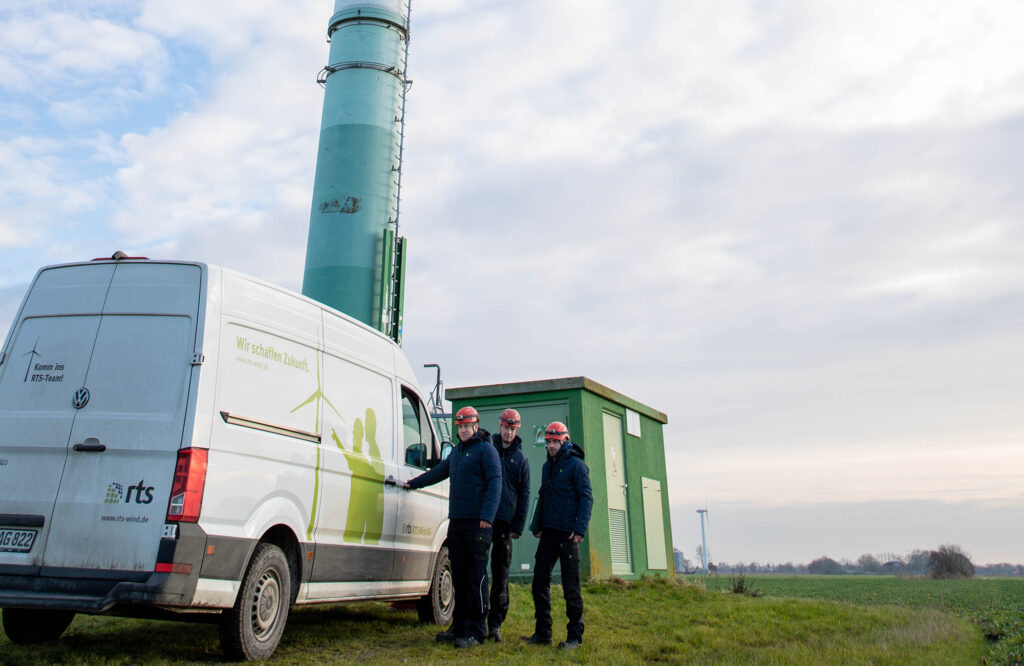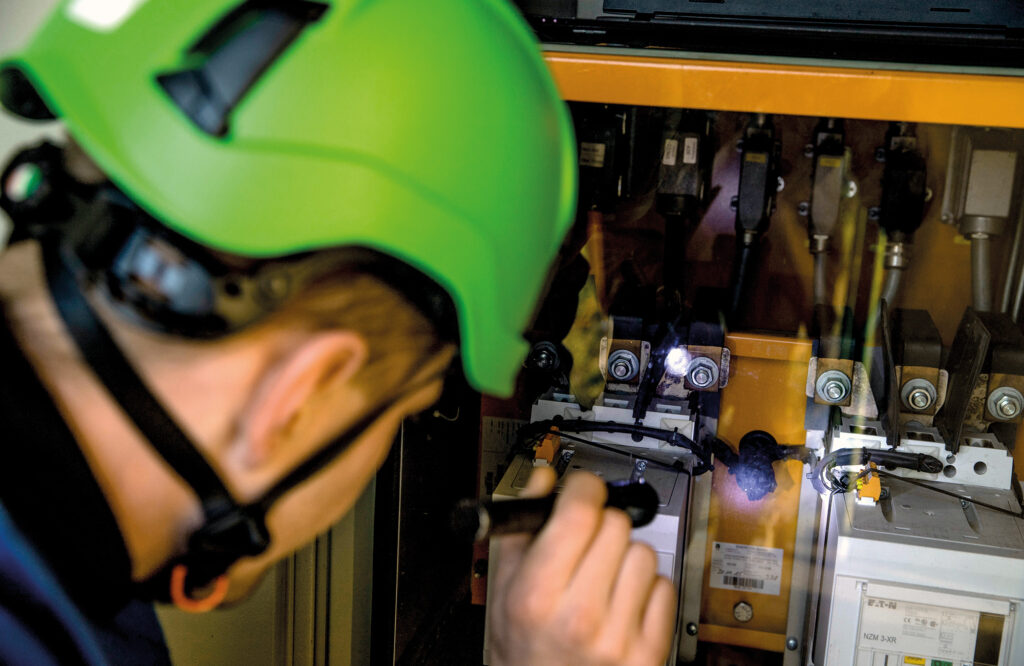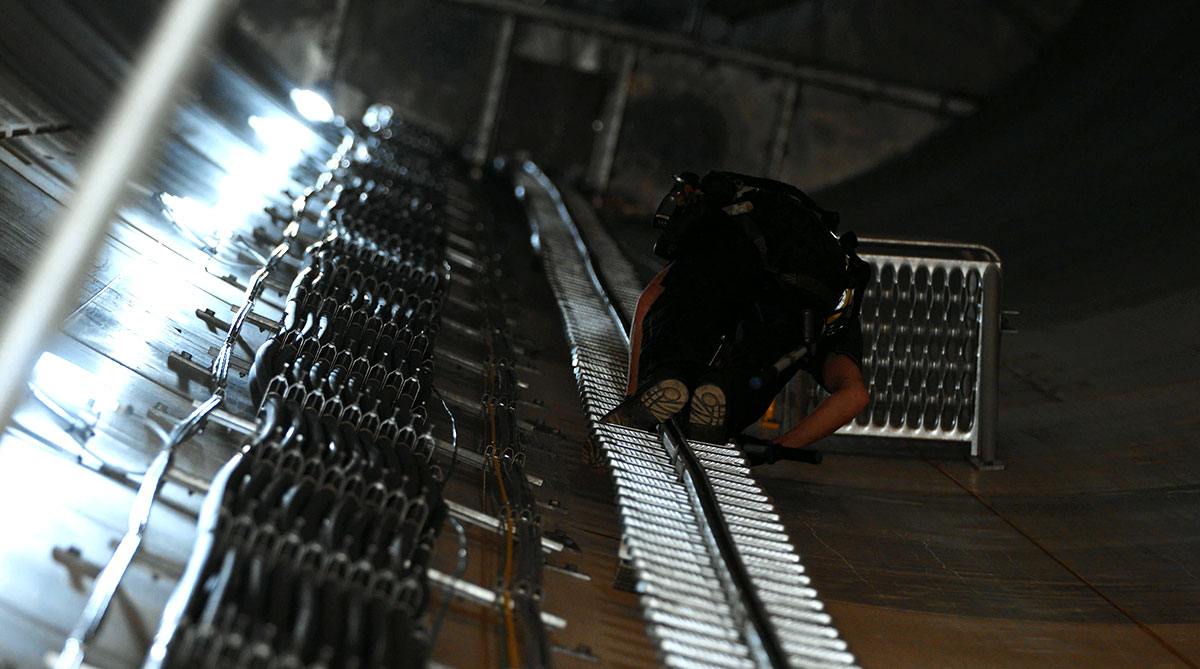
Wind Turbine Service Engineers
In the field of wind power, service involves maintenance and operation assurance once the turbine is installed. This includes maintenance, repair, and servicing activities.
Service engineers for wind turbines are responsible for troubleshooting and preventing issues related to generators or rotor blades. The scope of their work covers both electronic and mechanical components, offering a wide range of tasks.
Tasks based on deployment areas of service engineers in wind turbines
Service engineers are deployed to wind turbines after they are commissioned. They ensure that all systems operate smoothly and address any problems that may arise. Essentially, they work in the service department, providing support to customers and their installations. However, they may also be involved in the installation and commissioning phase. Typically, the deployment areas are categorized as onshore and offshore.
The tasks in both areas are generally similar. During installation, the focus is on assembling and making all relevant elements operational. The work is performed within a given timeframe, which should be completed on schedule. This includes the installation of cables, hardware and software components, followed by testing.
In the service phase, the objective is to monitor and ensure the ongoing operation. Service engineers conduct regular maintenance and inspection work, examining hydraulics, gearboxes, and wear parts such as bearings, shafts, and slip rings. If necessary, they replace or repair these components. In case of malfunctions, they conduct troubleshooting and handle the repairs and re-commissioning. Maintenance, repair, and troubleshooting activities are carefully planned and documented.
Service Engineers for Onshore Wind Turbines
The term “onshore” refers to wind turbines located on land, as opposed to offshore locations. Wind farms with numerous turbines require regular monitoring. The most challenging factor here is the weather, which can introduce unforeseen complications. The turbine’s exposure is limited to wear and tear caused by operation and weather conditions. However, onshore turbines may also face vandalism, which can lead to additional cleaning or repair work.
Service Engineers for Offshore Wind Turbines
“Offshore” refers to wind farms situated in coastal waters. Service engineers in offshore wind turbines face similar tasks as those working on onshore turbines. However, offshore turbines are subject to additional challenges such as salt in the sea air and seawater, which affect the rotor blades and tower differently, requiring special maintenance. Additionally, unpredictable weather conditions may demand greater adaptability to complete the work within the two-week deployment period.

Career Path
Becoming a service engineer for wind turbines can be achieved through further education based on another profession. Ideally, service technicians have mechanical or electrical training. Alternatively, with sufficient work experience in related industries, it is possible to make a career transition. The necessary knowledge and skills are acquired through training programs that enable individuals to maintain and repair wind turbines.
Since the work is typically performed at great heights, additional training as an industrial climber may be beneficial. This allows for more flexible deployment in wind farms when working “on the ropes,” although it is not mandatory. Usually, access to the turbine is via an elevator. To obtain the qualification, training according to FISAT or IRATA can be pursued, which includes a final examination.
With the successful completion of the qualification, participants obtain the necessary additional qualifications and can pursue relevant positions in the field.
Current job offers
No suitable job offer found? No problem, just apply to us anyway!

Requirements and Prerequisites
To work as a service engineer in the wind energy industry, you should meet several requirements. The necessary expertise is gained through further education and demonstrates the required technical skills to promptly and reliably address arising issues. However, these job-specific skills are just the beginning. In addition to fundamental attributes such as reliability and responsibility, the role of a service engineer in wind turbines demands further qualities.
The work is generally conducted in teams of one or two colleagues, requiring good teamwork as all team members rely on reliable collaboration. Moreover, the tasks
encountered can vary daily, with conditions unexpectedly changing. Adverse weather, unforeseen delays, and similar factors necessitate a flexible approach to adapt quickly.
Service engineers in wind turbines work at heights of approximately 100 meters. Therefore, they must possess basic height tolerance and be free from vertigo. Additionally, the work requires physical fitness. If you aspire to work offshore, you should be suited for work at sea and have no issues with seasickness.
Furthermore, it is important to have a willingness to travel for work since wind turbines are usually not located near residential areas. The work takes place at least nationwide, often across Europe. It is organized in multi-day “deployments,” and accommodation is provided in hotels near the sites. As a service engineer for wind turbines, you should be prepared for such work rhythms.

Future Outlook for Service Engineers in Wind Turbines
Renewable energies continue to experience significant growth. Within the energy transition, wind power plays a central role and serves as a crucial pillar both onshore and offshore. As a result, service engineers in wind turbines currently have excellent job prospects with long-term job security. The industry’s development has created numerous positions and a high demand for skilled professionals. With the right personal qualifications, it is also possible to build a successful career in this field.
To succeed and progress in the wind power industry, three key attributes are crucial: initiative, teamwork, and adaptability. The industry is not only experiencing growth but also undergoing constant change. The rapid expansion and associated developments require continuous adaptation to avoid falling behind. The work itself is generally carried out in teams, with one or two colleagues. This necessitates a mutual reliance on each other to ensure the safe and reliable completion of tasks. Spontaneous problems may arise at any time, requiring independent decision-making as there may not be time for consultations.
FAQs about Service Engineers in Wind Turbines
What is the salary for service engineers in wind turbines?
Providing a specific salary figure is not possible due to various factors. The salary of a service engineer in the wind energy industry depends on individual factors such as work experience, company size, and job scope. Additionally, various allowances are provided due to the unique working conditions.
Is formal education required to become a service engineer in wind turbines?
If you want to become a service engineer for wind turbines, you first need solid vocational training in the mechanical or electrical field. It is then possible to take further training that builds on the technical training, or to join a wind turbine service team directly. You then learn practically “on the job”. Alternatively, a lateral entry is possible if you have already worked in wind energy for a longer period of time and have the corresponding skills.